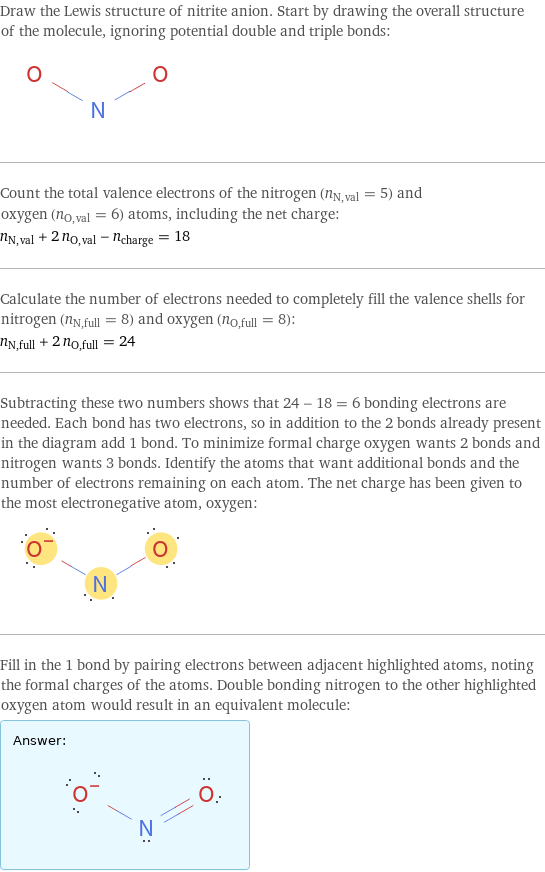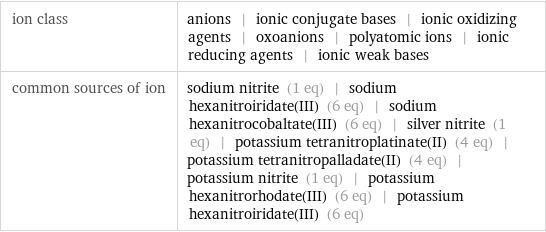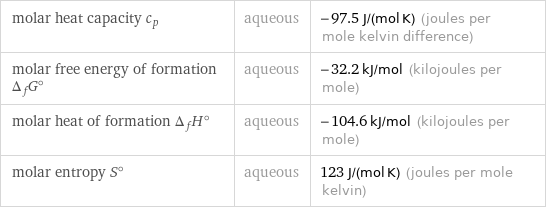Input interpretation

nitrite anion
Lewis structure

Draw the Lewis structure of nitrite anion. Start by drawing the overall structure of the molecule, ignoring potential double and triple bonds: Count the total valence electrons of the nitrogen (n_N, val = 5) and oxygen (n_O, val = 6) atoms, including the net charge: n_N, val + 2 n_O, val - n_charge = 18 Calculate the number of electrons needed to completely fill the valence shells for nitrogen (n_N, full = 8) and oxygen (n_O, full = 8): n_N, full + 2 n_O, full = 24 Subtracting these two numbers shows that 24 - 18 = 6 bonding electrons are needed. Each bond has two electrons, so in addition to the 2 bonds already present in the diagram add 1 bond. To minimize formal charge oxygen wants 2 bonds and nitrogen wants 3 bonds. Identify the atoms that want additional bonds and the number of electrons remaining on each atom. The net charge has been given to the most electronegative atom, oxygen: Fill in the 1 bond by pairing electrons between adjacent highlighted atoms, noting the formal charges of the atoms. Double bonding nitrogen to the other highlighted oxygen atom would result in an equivalent molecule: Answer: | |
General properties

formula | (NO_2)^- net ionic charge | -1 alternate names | dioxonitrate | dioxidonitrate | nitrite | nitrite(1-)
Ionic radius

thermochemical radius | 192 pm
Units

Other properties

ion class | anions | ionic conjugate bases | ionic oxidizing agents | oxoanions | polyatomic ions | ionic reducing agents | ionic weak bases common sources of ion | sodium nitrite (1 eq) | sodium hexanitroiridate(III) (6 eq) | sodium hexanitrocobaltate(III) (6 eq) | silver nitrite (1 eq) | potassium tetranitroplatinate(II) (4 eq) | potassium tetranitropalladate(II) (4 eq) | potassium nitrite (1 eq) | potassium hexanitrorhodate(III) (6 eq) | potassium hexanitroiridate(III) (6 eq)
Thermodynamic properties

molar heat capacity c_p | aqueous | -97.5 J/(mol K) (joules per mole kelvin difference) molar free energy of formation Δ_fG° | aqueous | -32.2 kJ/mol (kilojoules per mole) molar heat of formation Δ_fH° | aqueous | -104.6 kJ/mol (kilojoules per mole) molar entropy S° | aqueous | 123 J/(mol K) (joules per mole kelvin)